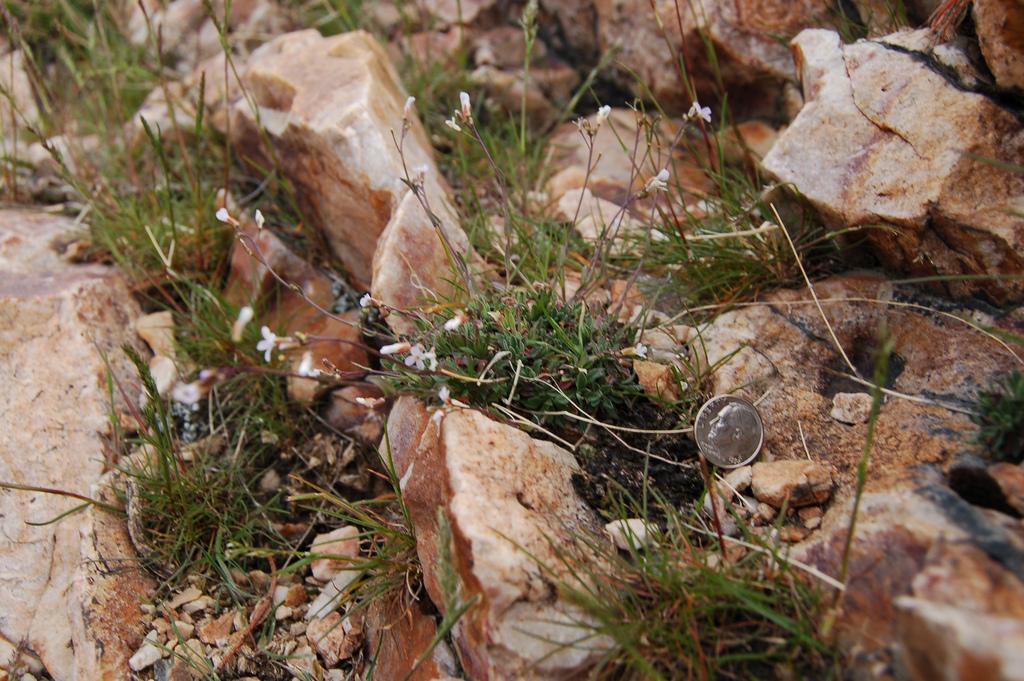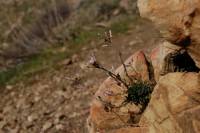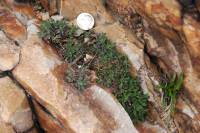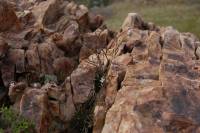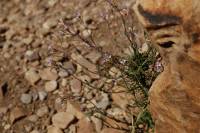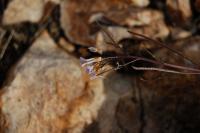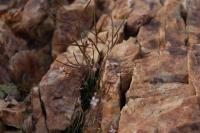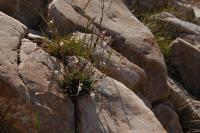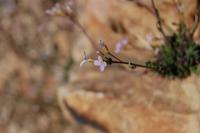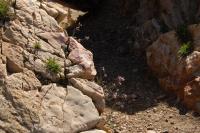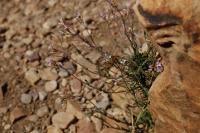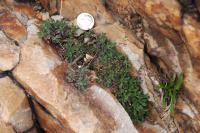Perennials; long-lived; (ces-pitose); sexual or apomictic; caudex woody.
Stems 1 or several per caudex branch, arising from center or margin of rosette near ground surface, 0.8-2.8(-3.5) dm, sparsely pubescent proximally, trichomes simple and subsessile, 2-rayed, 0.3-0.6 mm, glabrous distally.
Basal leaves: blade oblanceolate to linear-oblanceolate, 1-4(-6) mm wide, margins entire or subapically toothed, ciliate proximally, trichomes (simple), to 0.6 mm, surfaces densely pubescent, trichomes short-stalked, 4-8-rayed, 0.05-0.1 mm.
Cauline leaves: 2-6, not concealing stem; blade auricles 0.5-1.5 mm, surfaces of distalmost leaves glabrous.
Racemes 5-17-flowered, usually unbranched.
Fruiting pedicels ascending to divaricate-ascending, straight, 4-14 mm, glabrous.
Flowers ascending at anthesis; sepals glabrous or pubescent; petals lavender to purple, 3.5-5.5 × 1-1.8 mm, glabrous; pollen ellipsoid or spheroid.
Fruits ascending to divaricate-ascending, not appressed to rachis, not secund, straight to slightly curved, edges parallel, 3-7 cm × 1-1.5 mm; valves glabrous; ovules 52-72 per ovary; style 0.05-0.3 mm.
Seeds uniseriate, 1-1.5 × 0.7-1 mm; wing often distal, ca. 0.1 mm wide.
2n = 14, 15. Flowering Apr-Jun. Cliffs and rocky slopes in sagebrush, mountain shrub, and open conifer forests; 400-2400 m; B.C.; Idaho, Mont., Nev., Oreg., Utah, Wash., Wyo.
Boechera microphylla is recognizable by its minute (0.05-0.1 mm), 4-8-rayed leaf trichomes, mat-forming habit, simple and 2-rayed trichomes on stems proximally, and ascending fruits. Both sexual and apomictic collections are known; further study is needed to determine whether they truly are conspecific. The taxa traditionally treated as
Arabis (
Boechera)
microphylla vars.
macounii and
thompsonii are here recognized as
B. macounii and
B. cascadensis, respectively (see M. D. Windham and I. A. Al-Shehbaz 2007 for detailed comparison).

